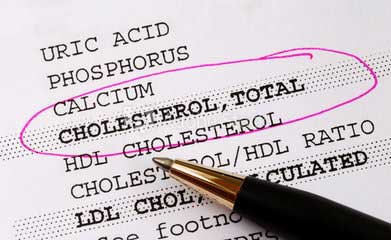Lipid Profile: A panel of tests that determine the risk of coronary heart disease. These tests have been shown to be indicators of a person’s likelihood of having a heart attack or stroke caused by blockage of blood vessels or hardening of the arteries. The lipid profile measures:
- Total cholesterol (TC),
- High density cholesterol (HDL) – often called “good” cholesterol,
- Low density cholesterol (LDL) – often called “bad” cholesterol
- Triglycerides (Trig)
Glucose (GLU): The blood glucose test is ordered to measure the amount of glucose in the blood right at the time of sample collection. It is used to detect both hyperglycemia and hypoglycemia, to help diagnose diabetes, and to monitor glucose levels in persons with diabetes.
A1C: The A1c test result give a picture of the average amount of glucose in the blood over the last few months. They can help you and your doctor know if the measures you are taking to control your diabetes are successful or need to be adjusted.
TSH: Thyroid-stimulating Hormone (TSH): The TSH test is often the test of choice for evaluating thyroid function and/or symptoms of hyper- or hypothyroidism.
PSA: Prostate Specific Antigen (PSA): The PSA test may be used to screen both asymptomatic and symptomatic men for prostate cancer.
Blood Pressure (BP): Persistent hypertension is one of the risk factors for strokes, heart attacks, heart failure and arterial aneurysms, and is the leading cause of chronic renal failure.
Body Mass Index (BMI): The body mass index is a statistical measurement which compares a person's weight and height. It is used to estimate a healthy body weight based on how tall a person is.
Body Fat Percentage (BF): Body fat percentage is the total weight of the person's fat divided by the person's weight. Body fat percentage is the superior gauge of an individual's fitness level, as it is the only body measurement which directly calculates the particular individual's body composition without regard to the individual's height or weight.
Spirometry: Spirometry is the most common of the Pulmonary Function Tests (PFTs), measuring lung function, specifically the measurement of the amount (volume) and/or speed (flow) of air that can be inhaled and exhaled. Spirometry is an important tool used for assessing conditions such as asthma, pulmonary fibrosis, cystic fibrosis, and COPD.
Osteoporosis Risk Screening (BMD): A reliable technique to assess risk of fracture due to Osteoporosis. The Bone Density Test is conducted by ultrasound technique at the heel of one foot.
Nicotine/Cotinine Testing: Nicotine or its primary metabolite, cotinine are most often tested to evaluate tobacco use.
Alcohol/Drug: Competitive panel immunoassay that can be used for the simultaneous, qualitative detection of multiple drug metabolites at specific cutoff levels in human urine.
Lead Testing: Lead is a poisonous (toxic) metal that can damage the brain and other parts of the body. Lead testing is used to determine the concentration of lead in the blood at the time the sample was collected. The blood lead test is used to screen for exposure to lead.
Retinopathy: Retinopathy is any damage to the retina of the eyes, which may cause vision impairment. Frequently, retinopathy is an ocular manifestation of systemic disease as seen in diabetes or hypertension


